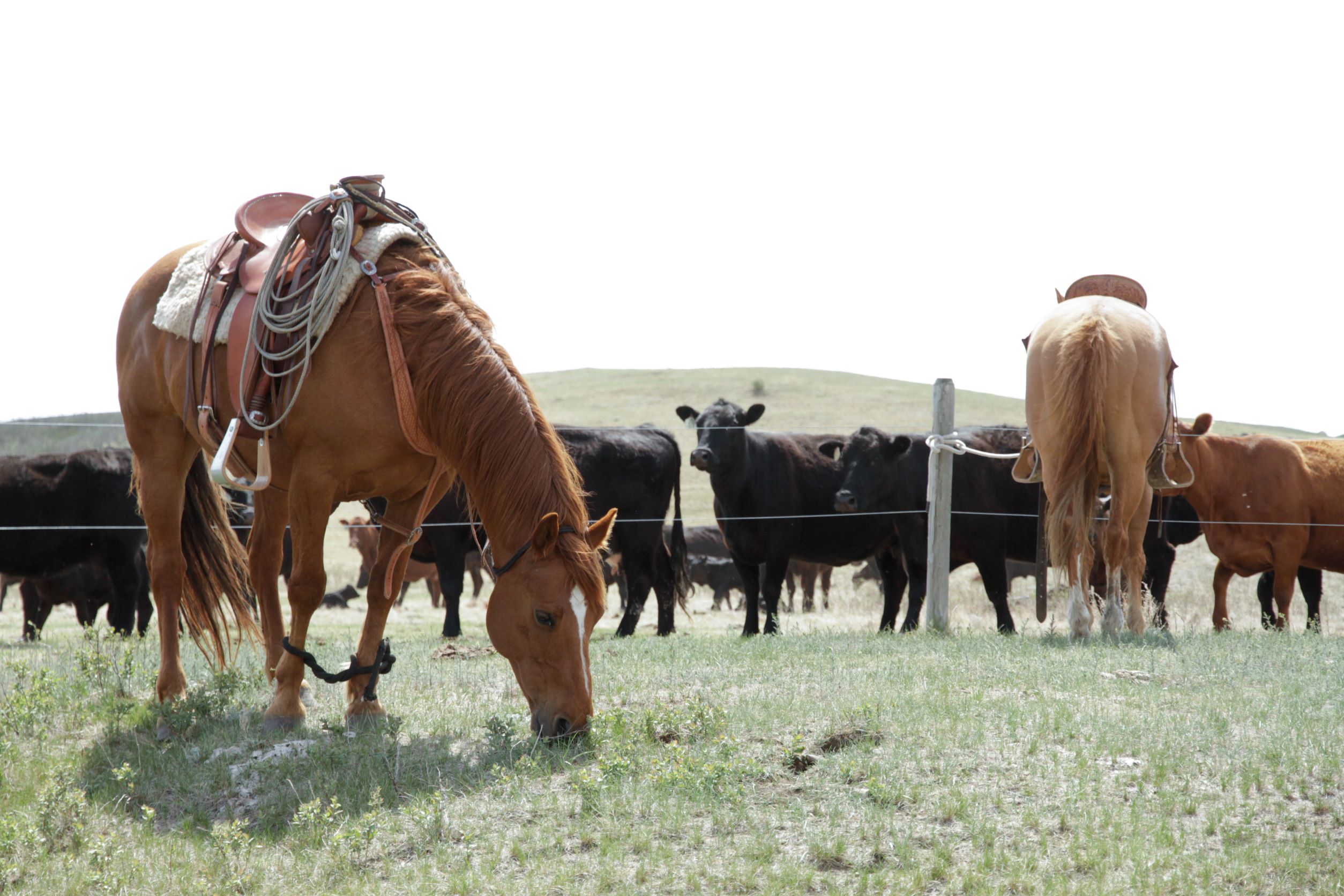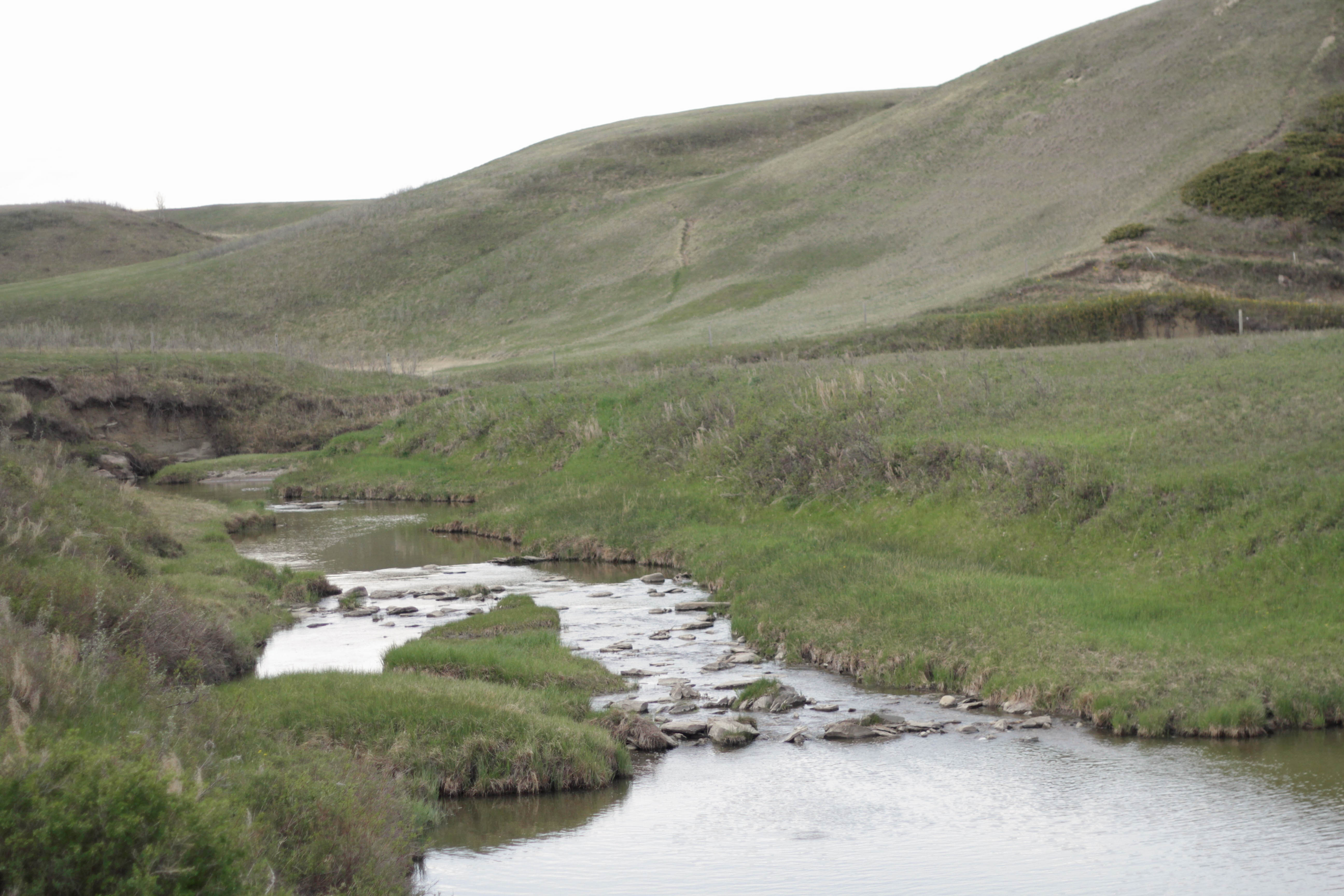Since 1992, Alberta Beef Producers (ABP) has recognized farms and ranches across the province whose natural resource stewardship practices contribute to the environment and enhance productivity and profitability. This year, Ribbon Creek Ranch, near Linden, Alberta, has been selected as the recipient of the 2022 Environmental Stewardship Award (ESA).
“Grain, cow-calf, and yearlings. We background our calves in the winter and put them on grass in the summer. I work the cow-calf side with my wife [Dawn] and children. It’s a family farm. And I work with my dad on the grain farm side,” says Jerry when asked to describe Ribbon Creek Ranch.
It is easy to see that this family business has plenty of helping hands, including three daughters and three sons – the youngest of whom are five-year-old twins. Jerry and Dawn’s eldest daughter has recently ventured across country to become a teacher, and Jerry mentions, “there’s a big gap to fill without her. She was very involved with the cattle.”

Jerry Baerg and his family raise cattle on land that his grandfather purchased in 1972.
“My grandfather lived on the west side of Linden where my father grew up and farmed with him. He was a grain farmer, and my dad was a grain and chicken farmer.”
Initially the farm was 1,500 acres of mostly cultivated land that served primarily to grow grain and hay, with a small backgrounding operation. Jerry got involved in the early 2000s and brought with him a renewed focus on building a viable and sustainable family business.
He transitioned the backgrounding operation into a progressive commercial cattle operation, sourcing genetics and seedstock from producers who were prioritizing environmental stewardship within their own farms and ranches.
In 2013, Jerry started the cow herd.
“That part has been a lot of fun for me, building the herd on my own… I’ve always enjoyed cattle. It may be a little harder work, but I’ve always felt it was worth it. With a family growing up, it’s a nice occupation… there’s a lot of work we can do together like calving and sorting pairs. It feels like a family project.”
At the same time as he started the cow herd, Jerry also purchased a second property in an area primarily comprised of rolling hills and native grasslands. Additional land was also rented to provide space for summer grazing, and to allow for prolonged rest periods in preparation for winter grazing.
“When we bought that small ranch out east, there were native pastures and large pastures from the previous owner. I thought, if I am going to make this pay, I am going to have to fence this and manage this grass.”

Through strong mentors from neighbours and the Foothills Forage and Grazing Association, Jerry learned how to handle the fragile land and hard grass.
“You have to treat it right. I slowly started fencing it with funding from the Canadian Agriculture Partnership (CAP). I fenced off riparian areas and creeks, along with surrounding lowlands to prevent erosion.”
Jerry uses electric fencing to create smaller paddocks for rotational grazing. He is also in the process of seeding cropland back to perennial grass to increase grazing capacity and support a growing cow herd.
In the winter, the cattle graze residue in the grain fields, which provides them with nutrient-rich feed. And Jerry’s experimenting with underseeding annual crops to clover to combine cash crops and still have feed for cattle.
“The cow-calf and the grain farm really complement each other. There’s a lot of value in the grain side that you can utilize for the cow-calf side,” says Jerry.
Through Growing Forward (now CAP) and Kneehill County, the farm developed a spring watering system in one of many steps to protect water sources.
“We started with the spring development at the bottom of the valley, and I realized we needed our water on the top of the hills. That’s when I decided to run a pipeline from well water in the yard.”
In the past, the lowlands would end up overgrazed with heavy deposits of organic matter, while the hilltops remained untouched and deprived of nutrients. To combat this challenge, Jerry utilized over 1.5 miles of above-ground pipe, and portable solar powered surge tanks to bring water to the top of the hills in six paddocks.
“This has drastically reduced traffic in the lowlands and concentrated grazing on the sides and tops of the hills, which has resulted in more evenly distributed nutrients throughout the grazing areas.
“In the winter I use the portable solar watering system to run a wet well.”
Solar power is used to deliver water from these systems all throughout the two properties. The water sources and the grasslands are shared with numerous wildlife, including mule deer, white-tailed deer, pheasants, and more.
“I started getting interested in longer grazing periods. The Foothills Forage and Grazing Association has such a wealth of information. I was really enthused about longer grazing. It goes hand-in-hand with the regenerative part of [farming]. It is really important to me that my cows can be out on the land year-round and spreading nutrients to regenerate soil,” says Jerry.
“It is economic and regenerative, working in sync with nature.”
Jerry has made it a priority to maintain the integrity of the land and vows to never break any native ground. The move to year-round grazing was accomplished while also preserving over 320 acres of original native grassland.
He believes this success story will help ensure the sustainability and profitability of the operation for generations to come, even in spite of challenges like drought.
“We had a field day planned and everything was starting to get hot and dry. It is a difficult [time] for all of us ranchers.” When talking drought mitigation strategies, Jerry says he always has half of a year’s grazing on-hand. “I can’t only rely on this year’s growth.”
Jerry strives to provide for the land, and wildlife that call it home, and in return trusts that it will support his family for years to come. Jerry’s children have a strong interest in farming and ranching, and aim to follow in his footsteps.
“To me I would say this is a great honour. This award isn’t about the biggest operation, it is about stewardship. That is what I am trying to do – take care of things and work together with nature. Me and my family are honoured. I feel really humbled.”